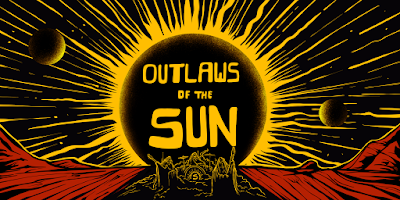Release
date: September 21st 2015. Label: Apocalyptic Witchcraft. Formats:
CD/DD
Notturno
- Tracklisting
1.Nebula
01:39
2.Eden
06:05
3.Kern
04:27
4.Creature
05:25
5.Invisible
03:46
6.Haxo
02:39
7.Amnesia
05:35
8.Lumen
03:38
9.Notturno
04:07
Review:
Occasionally
an album appears that is so well conceptualized and executed its very
existence seems improbable in this era of singles and disposability.
Notturno by Italian Post-rock act Australasia is one such release. An
instrumental project of enviable depth and scope, the band boasts
provocative influences which run the gamut from Ennio Morricone and
Red Sparowes to the Cure and Tangerine Dream. Heroes like these make
it clear the band has lofty ambitions. They succeed in fulfilling
these aspirations and more on Notturno.
Australasia
is the brainchild of Italian multi-instrumentalist Gian Spalluto.
Notturno was preceded by a number of releases including a reverent
cover of the theme to David Lynch’s Twin Peaks. It is easy to
detect Spalluto’s appreciation of cinema while absorbing these
layered, moody tone poems which navigate scene changes like a
sweeping camera. The nine uncompromising pieces on Notturno evoke
nostalgia, loss and wonder, often within the same song. A listener
might become simultaneously disoriented and stirred while submerged
in Spalluto’s immersive soundscapes. Fans of Mogwai, Godspeed You
Black Emperor and even Neurosis will find much to satiate them here.
Cocteau Twins and Joy Division are also touchstones, though
Australasia’s hazy, shoegaze influenced sound never becomes merely
imitative.
Opening
with the one minute forty second meditation “Nebula”, the group
quickly establishes its penchant for vintage synthesizers and
atmospheric passages. Unlike peers who use such moments as a lull to
set up the next crushing movement, Australasia possesses a unified
sound which includes bell like keyboard tones alongside dreamy
guitars and precise, punishing drums. Another aspect which
distinguishes them from the occasional excesses of the Post-rock
movement is a focus on brevity and songcraft. Despite the
non-presence of singing (for the most part) these are songs in the
classic sense. Yes, they contain all the intense peaks and valleys
that are the hallmarks of their genre. However, only “Eden”
passes the six minute mark and most tracks are noticeably brief when
compared to the lengthier compositions of bands like Isis or Russian
Circles.
“Creature”
evokes the Smiths mingling with Disintegration era Cure as filtered
through the psychedelic prism of an act like The Mars Volta.
“Invisible” adds some keyboard pads that would not feel out of
place on a release helmed by Brian Eno or Daniel Lanois. Its
instrumental flow is broken by a soulful female voice midway through
the track. The unexpected appearance brings to mind Clare Torry’s
otherworldly vocal performance on Pink Floyd’s “Great Gig In The
Sky”. “Haxo” is a brief interlude boasting a rhythm in the
irregular 5/4 meter and an air of sustained tension.
Spalluto
is a masterful guitarist and arranger who is unafraid to distinguish
himself from the milieu. Rather, he seems to revel in his otherness.
The sheer audacity of his willingness to try something as ambitious
as this collection is testament to his clarity of vision. Expressive,
emotionally resonant guitar harmonies give way to washes of
electronics. Tightly wound and containing nary a wasted moment, the
songs effortlessly avoid instrumental metal cliches. In fact, this
illuminates the most confounding aspect of Australasia. Why does an
act so wide-ranging and unique even feel the need to profess any ties
to metal at all? Hypnotic mix and occasionally thick riffs
notwithstanding, Australasia’s co-opting of the term Post-black
metal feels a bit forced especially with music this fully realized.
Unlike
the willfully crude aesthetic of some acts in the aforementioned
genre, the production on Notturno is crisp and almost pointedly
professional. An unaccompanied piano is the sole instrument on the
closing title track. It weaves its way through a maze of subtly
arpeggiated chordal variations before peacefully concluding. Here, as
elsewhere, the lack of lyrics is no impediment to emotional impact.
Websters’ defines notturno as “an 18th century piece for an
instrumental group composed in several movements and resembling the
serenade or divertimento”. Spalluto has updated the form to
accommodate his own wide ranging musical imagination and we are the
lucky recipients of his bounty.
Words
by Ari Rosenschein
Links:

